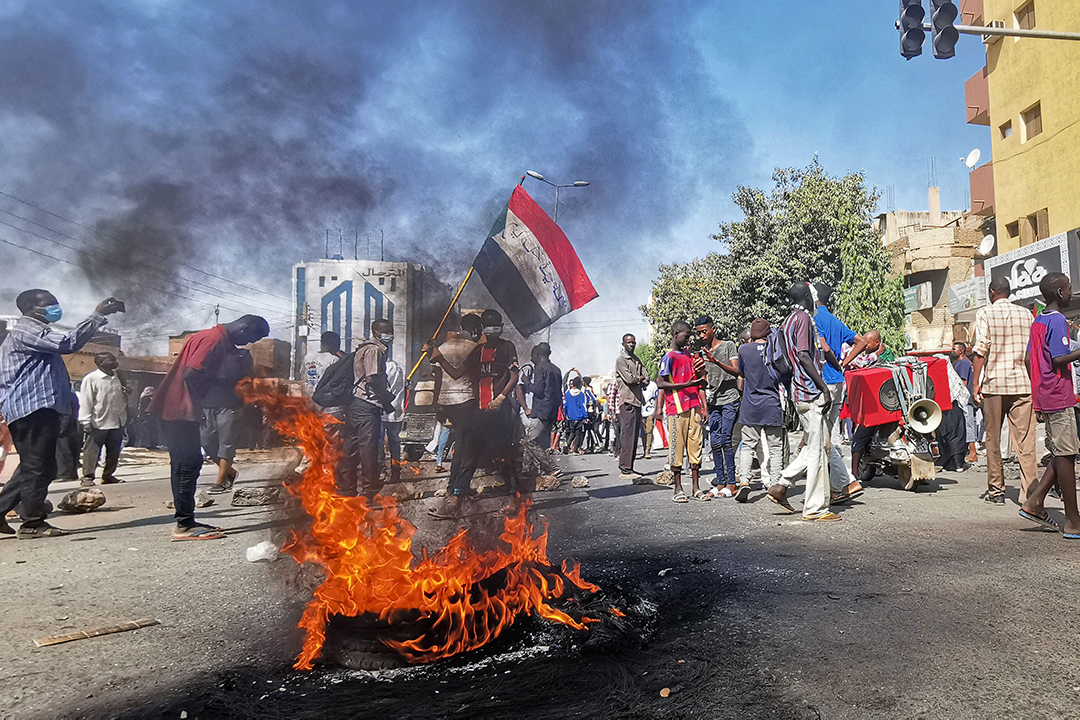Claims have been made that Iran and the United Arab Emirates (UAE) have supplied drones to the opposing parties in the 14-month battle that has ravaged Sudan, in violation of a UN arms embargo.
Table of Contents
Soldiers from the Sudanese government were rejoicing in a historic military victory early on March 12, 2024. At last, they had taken back Khartoum, the capital, and the offices of the official broadcaster. The structure had been taken over by the paramilitary Rapid Support Forces (RSF) at the beginning of the civil war 11 months prior, along with most of the city. This army triumph was noteworthy because footage revealed that Iranian-made drones were used to carry out the strike.
Iran and UAE’s Alleged Support to Sudanese Government
The director of the Sudan Transparency and Policy Observatory, Suliman Baldo, claims that the army depended on the air force in the early phases of the conflict. The military discovered that all of their preferred forces were under siege, and they lacked combat troops on the ground, according to him. While the army remained in the air, the RSF continued to hold ground control over most of Khartoum and Darfur in western Sudan. Early in January 2024, a video showing an army drone being shot down by the RSF surfaced on Twitter.
Drone specialist Wim Zwijnenburg, who leads the Humanitarian Disarmament Project at Dutch peace group PAX, said that the drone’s engine, tail, and wreckage were similar to those of an Iranian-made drone known as the Mohajer-6. With guided freefall weapons, the 6.5-meter-long Mohajer-6 is capable of airstrikes up to 2,000 kilometres (1,240 miles) in altitude. He later found a second drone in a satellite photo taken of the army’s Wadi Seidna military base, north of Khartoum.
He claims that it is an indication of active Iranian support for the Sudanese army, despite the fact that the country’s ruling council has refuted receiving arms from Iran. If these drones are equipped with guided munitions, it means they were supplied by Iran because those munitions are not produced in Sudan, says Zwijnenburg. Early in December, a Boeing 747 passenger aircraft operated by Qeshm Fars Air, an Iranian cargo carrier, took off from Iran’s Bandar Abbas airport and headed towards the Red Sea before going off the radar.
A few hours later, satellites photographed an identical aircraft near the east of the nation’s Port Sudan airport, home to Sudanese army leaders. Later on Twitter, a picture of the same aircraft on the runway became viral.
What’s the Status in Sudan Now?
The deadly power battle between Sudan’s two warring factions continues as the civil conflict moves into its second year. Nearly 15,000 people have died and over 8.2 million have been displaced since the conflict started on April 15, 2023, creating the biggest displacement disaster in history. With nearly 2 million displaced Sudanese fleeing to unstable regions in Ethiopia, South Sudan, and Chad, camps for migrants are swamped, raising fears that Sudanese refugees may soon try to reach Europe.
The UN is still pleading for more aid because over 25 million people want humanitarian relief as declining food security could lead to the “largest hunger crisis in history.” Mediation attempts have failed while the local forces continue their brutality. While the United States said that talks would go back up in Saudi Arabia on April 18, Carl Skau of the World Food Programme cautioned that “we are running out of time.”
